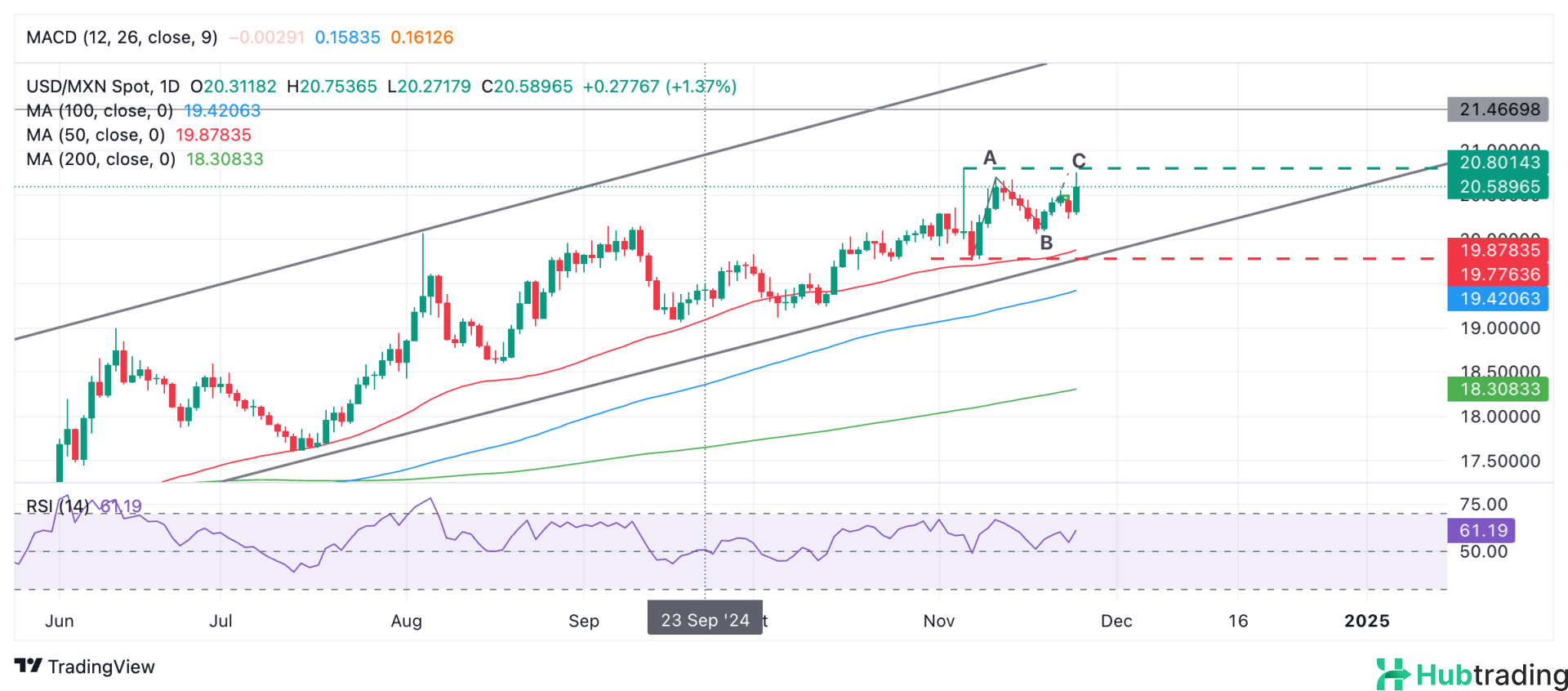- The Mexican Peso falls sharply as President-elect Donald Trump threatens to impose a 25% tariff on imports from Mexico.
- Additional pressure comes from expectations that Mexico's central bank (Banxico) may begin more aggressive interest rate cuts due to easing inflation.
- Technically, USD/MXN rallies to the top of a short-term range, reflecting the Peso's current weakness.
The Mexican Peso (MXN) dropped by approximately 1.25% on Tuesday after President-elect Donald Trump announced his intention to impose a 25% tariff on imports from Mexico and Canada, unless both countries take stronger actions to curb illegal migration and the cross-border trafficking of illicit drugs. Trump's tariff threat primarily targets Mexico, which has been a major source of fentanyl, a synthetic opioid that is often smuggled into the US by powerful drug cartels.
As a result of the news, the Peso weakened to 20.75 per US Dollar (USD), down from 20.31 on Monday. Mexico, a key trading partner of the US, exported $454.8 billion worth of goods to the US in 2022, a significant increase from the previous year, according to the Office of the United States Trade Representative. The imposition of tariffs would likely reduce demand for Mexican-made products, further weakening the Peso.
Mexican Peso faces pressure from Banxico easing
Additionally, the Mexican Peso faces pressure from expectations that the Bank of Mexico (Banxico) may start cutting interest rates more aggressively following November’s easing inflation data.
A lower interest rate environment typically weakens a currency as it reduces the inflow of foreign capital. Recent reports show Mexico's headline inflation rate fell to 4.56% year-over-year in early November, below the Bloomberg survey estimate of 4.65%.
While the Peso briefly gained strength on Monday, reacting positively to news that Trump had nominated Scott Bessent, a fiscally conservative hedge-fund manager, as his pick for Treasury Secretary, the gains were short-lived.
Bessent's nomination is seen as signaling potential restraint in government spending, which was expected to temper inflationary pressures and possibly reduce tariffs on Mexico. However, the Peso's recovery was short-lived, and the losses from Tuesday erased any gains made earlier in the week.
Technical Analysis: USD/MXN Struggles at Range Top

In terms of technical analysis, USD/MXN has rallied back to the top of a mini range formed throughout November, filling the gap that appeared on Monday.
The pair has reached the C wave of a Measured Move pattern, which follows a zig-zag structure where waves A and C typically mirror each other in length. In the short term, USD/MXN is expected to remain range-bound, oscillating between 19.70 and 20.80.
A decisive breakout above the range high at 20.80 could signal the start of a more bullish trend in the short term, aligning with the longer-term uptrend in a rising channel. On the other hand, if the pair does not break above this level, it is likely to return to the lower end of the range, with a potential pullback towards the 19.70s.
A clear breakout above the range high would likely be accompanied by a significant green candle that closes near its highs, or a series of consecutive green candles breaking through the range.





